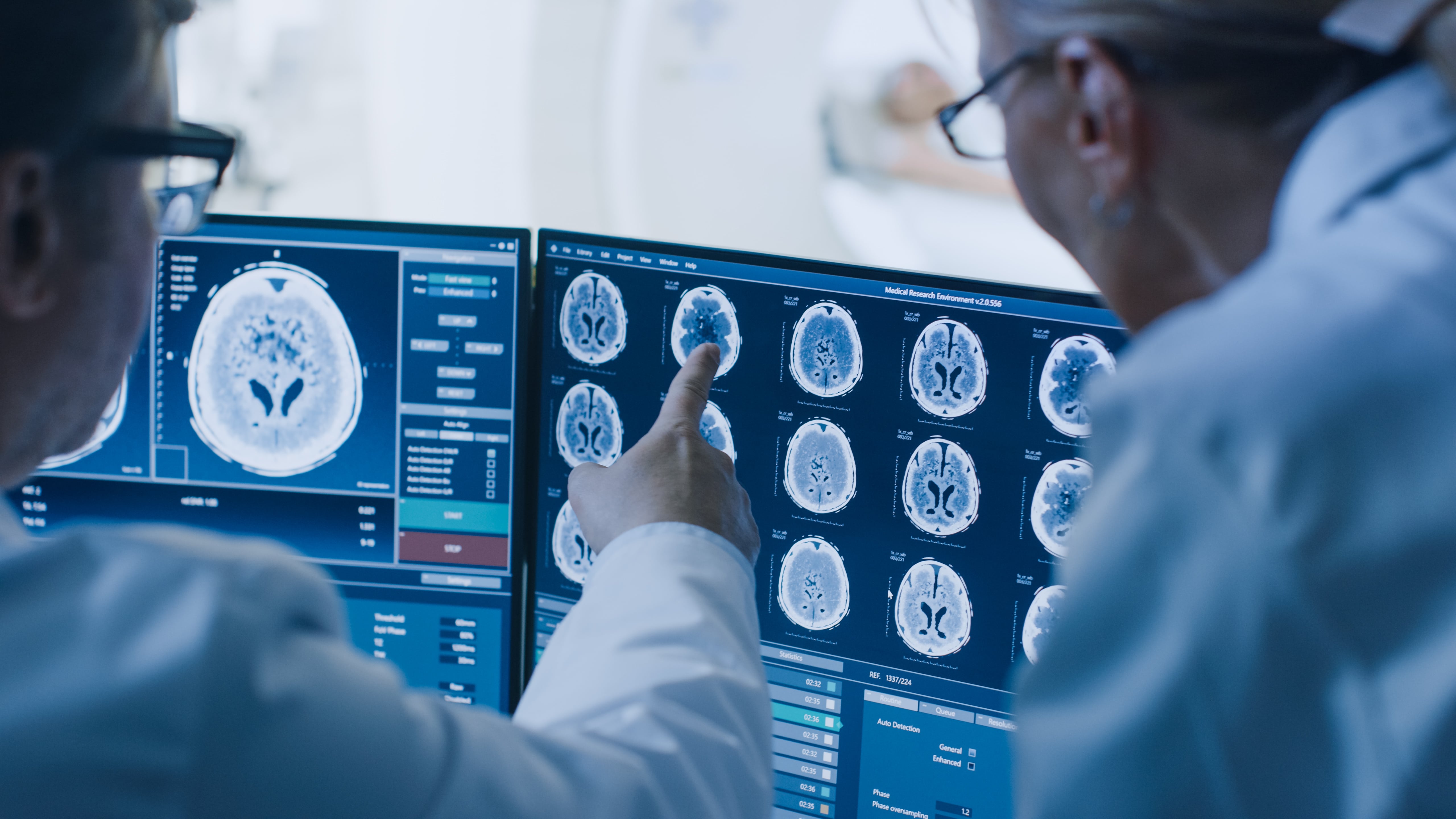AI in Medical Imaging: Revolutionizing Radiology

From neurological diseases to breast cancer, find out how artificial intelligence in medical imaging can help healthcare providers improve the quality of patient care.
Medical imaging exams such as x-rays, MRIs, ultrasounds, and CAT scans provide a wealth of information about a patient’s condition and well-being. There is a staggering amount of data for radiologists to identify, analyze, and monitor. To meet workload demands, studies show that the average radiologist must interpret one image every three to four seconds in an eight-hour workday.
How can artificial intelligence (AI) increase the efficiency and quality of care in radiology? In this article, we explore the benefits and use cases of AI in medical imaging. We also take a look at some of the latest inventions and tools that are being developed to revolutionize radiology.
The value of AI in medical imaging
According to GE Healthcare, 90% of all healthcare data comes from medical imaging--and more than 97% of it is not analyzed or used. Deploying AI in medical imaging can improve the speed, precision, and quality of care.
- Detection and prioritization. Automated detection can help radiologists view images based on reading priority, enabling faster reporting and improving patient outcomes. “Deep learning can potentially excel by learning a hierarchical normal representation of a specific type of image from a large number of normal exams,” says the Canadian Association of Radiologists.
- Monitoring and registration. To keep track of the development of a tumor, radiologists must compare numerous images to monitor progress. But not all change characteristics can be identified by humans. “These could include subtle variations in texture and heterogeneity within the object. Poor image registration, dealing with multiple objects and physiological changes over time all contribute to more challenging change analyses,” writes researchers from Harvard Medical Center and Columbia University. Deep learning could provide a higher and faster level of consistency in monitoring.
- Image acquisition. AI-integrated imaging sensors can be used to scan the various positions of a patient while limiting patient-healthcare contact, making medical imaging exams safer. An AI-automated and optimized process could also enable reductions in patient radiation dose, lowering radiation exposure while maintaining high-quality medical images.
- Reporting. As the formal documentation of the results of a medical imaging exam, a radiology report is a critical component of a radiologist’s service. However, it is a laborious and time-consuming task that currently lacks standardization, with data being recorded in different formats by medical professionals. Using AI in generating reports could lead to a more standardized terminology.
Watch this video to see how combining AI with radiology can increase accuracy, improve workflow, and enhance patient care.
Use cases for AI in medical imaging
Let’s see how AI can support radiologists and pathologists to diagnose various medical conditions.

Classifying child brain tumors
Brain and spinal cord tumors are the second most common cancers in children, accounting for about 1 out of 4 childhood cancers. A recent UK study has found that the combination of advanced imaging and AI can enable the classification of pediatric brain tumors without the use of a biopsy.

Detecting fractures
Over 300,000 older people are hospitalized every year for hip fractures. Radiologists use an x-ray to diagnose these injuries, but some hip fractures can be hidden under soft tissue, making them hard to spot. A study published in the European Journal of Radiology shows how utilizing Deep Convolutional Neural Network (DCNN) can help radiologists spot fractures. Radiologists read hip-x-rays with and without the use of the AI algorithm. Without the algorithm, radiologists spotted 83% of the fractures, while they were able to spot 88% of the fractures with the use of the AI algorithm.

Breast cancer detection
Up to 30% to 40% of women with breast cancer have tumors that can be missed during screening. A study conducted by academic hospitals in South Korea and Lunit, a medical AI software company showed the benefits of AI-aided breast cancer detection. When using an AI-based tool for mammography screenings, the radiologists’ accuracy increased by 9.5% to 84.8%.

Diagnosing neurological diseases
At least 50 million people around the world are believed to be living with Alzheimer's disease or a related form of dementia. In China, researchers used machine learning to train a brain age prediction model based on more than 900 MRI scans to aid in the early detection of cognitive impairment. "The predictive model we generated was highly accurate at estimating chronological age in healthy participants based on only the appearance of MRI scans," the researchers wrote.
AI and radiology: latest innovations
From startups to industry veterans, tech companies are augmenting radiology with AI. Let’s take a look at some of the latest inventions.
Vexev: Tomographic ultrasound robot
Cardiovascular diseases are the leading cause of death worldwide, accounting for 32% of global deaths. The Australian medtech startup Vexev hopes to help change that with its fully automated ultrasound imaging robot--enabling affordable, high-quality, non-invasive imaging for early detection and continuous monitoring.
Vexev, which has raised AUD 1.5 million in venture capital funding, designed the ultrasound imaging robot to give patients easy access to quick, inexpensive, and effective health scans.
“It was [about finding] a way for patients to get imaging with the lowest barriers to accessibility, that would make something like screening at scale possible,” Vexev co-founder Dr. John Carroll told The Sydney Morning Herald.
Caption Health: AI-enabled ultrasound guidance software
Last February 2020, the U.S. Food and Drug Administration authorized the marketing of Caption Health’s AI-enabled ultrasound guidance software for cardiac imaging. The software uses machine learning to instruct the user on how to correctly position the transducer to capture ultrasound images of the heart.
The future of medical imaging
The global market for AI applications in medical imaging is projected to reach USD 1.2 billion by 2025, up by over USD 800 million from the market size in 2020.
Last year, stand-alone AI software applications accounted for 71% of the medical imaging AI market, while advanced visualization-bundled AI tools accounted for 29%. According to the report from Synergy Research, the top four clinical applications of medical imaging AI are cardiology, neurology, breast, and pulmonology.
As technology continues to advance, the future of AI and medical imaging is bright and full of potential. From early detection to more effective monitoring and evaluation, AI in radiology can help healthcare providers give their patients the best quality of care.
As one of the Top 21 EMS companies in the world, IMI has over 40 years of experience in providing electronics manufacturing and technology solutions.
We are ready to support your business on a global scale.
Our proven technical expertise, worldwide reach, and vast experience in high-growth and emerging markets make us the ideal global manufacturing solutions partner.
Let's work together to build our future today.
Other Blog






